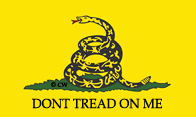Thanks to RCD for finding the PDF (I have the hard-copy) and making this so much easier to post. If you're really into scholarly definitions, this likely falls under "Gallicanism", by the way, particularly this: "According to the Gallican theory, then, the papal primacy was limited... by the canons and customs of particular Churches, which the pope was bound to take into account when he exercised his authority."
End of digression.
The author of this excerpt, Mgr. R. Schuler, Ph.D., was a member of the Committee and watched Bertie do his work. Note the use of the term "deception," which ........ahhhh........was one of Weakland's hallmarks.
Typical and perhaps most interesting of the innovations engineered through the Music Advisory Board by Father [Frederick] McManus, Father [Godfrey] Diekmann and Father [Rembert] Weakland was the “hootenanny Mass.” The scenario began in April 1965, when Father Diekmann delivered an address entitled “Liturgical Renewal and the Student Mass” at the convention of the National Catholic Educational Association in New York. In his speech, he called for the use of the “hootenanny Mass” as a means of worship for high school students. This was the kickoff of a determined campaign on the part of the Liturgical Conference to establish the use of profane music in the liturgy celebrated in the United States. Universa Laus had already begun a similar effort in Europe. [19] In September 1965, the Catholic press began to carry reports of the use of hootenanny music by those in charge of college and high school student worship. In February 1966, the Music Advisory Board was called to meet in Chicago, with an agendum that included a proposal for the use of guitars and so-called “folk music” in the liturgy. It was clear at the meeting that both Fr. McManus and Archabbot Weakland were most anxious to obtain the board’s approval. The Archabbot told of the success of such “experiments” at his college in Latrobe, Pennsylvania, where, during Mass, the students had enthusiastically sung, “He’s got the Archabbot in the palm of His hand.” Vigorous debate considerably altered the original proposal, and a much modified statement about “music for special groups” was finally approved by a majority of one, late in the when many members already had left. But once the rubber stamp had been applied, the intensity of the debate and the narrow margin of the vote were immediately forgotten. The Music Advisory Board had fulfilled its function; it had been used.
The press took over. American newspapers, both secular and ecclesiastical, announced that the American bishops had approved of the use of guitars, folk music and the hootenanny Mass. Despite repeated statements from the Holy See prohibiting the use of secular music and words in the liturgy, the movement continued to be promoted in the United States and in Europe.[20] Deception played a part, since American priests were allowed to think that the decision of the Music Advisory Board was an order from the bishops themselves. In reality, an advisory board has no legislative authority, nor does a committee of bishops have such authority. Decisions on liturgical matters need the approval of the entire body of bishops after a committee has received the report of its advisors and submitted its own recommendations to the full body.[21] The hootenanny Mass never came to the full body of bishops; it did not have to. The intended effect had been achieved through the announcement of the action of the Music Advisory Board and the publicity given to it by the national press. It was not honest, and further, it was against the expressed wishes and legislation of the Church.[22]
There are other examples of the introduction of the ideas of Universa Laus and the progressive liturgists that involved confusion and even deceit. The gullibility of the American clergy and their willingness to obey was used. A confusion was fostered in the minds of priests between the Bishops’ Committee on the Liturgy and the Liturgical Conference, which indeed had interlocking directorates. As anticipated, most American priests failed to distinguish between the releases that came from them, taking the proclamations of both as being the will of their bishops. Meanwhile, the official directives of the post-conciliar commissions in Rome rarely reached most American priests. They knew only the commentaries on them provided by the liturgists both nationally and on the diocesan level. As a result, the altars of most American churches were turned versus populum; choirs were disbanded; Gregorian chant was prohibited; Latin was forbidden for celebration of the Mass in many dioceses; church furniture and statuary were discarded. These innovations which distressed untold numbers of Catholics were thought to be the orders of the Second Vatican Council. Rather, they were the results of a conspiracy whose foundations and intentions have yet to be completely discovered and revealed.
There are many who think that these actions were The Cause of the long decline in church-attendance figures. I doubt it; these things occurred at about the same time as the "Sex, Drugs, and Rock'n'Roll" revolution and a period of relative material prosperity and comfort in the USA.
But there is no doubt that this stuff had influence, and it was deleterious.
By the way, RCD's Ari posted another very useful memorandum on Rembert's Gallicanism here, from Thomas Day.
Subscribe to:
Post Comments (Atom)




No comments:
Post a Comment